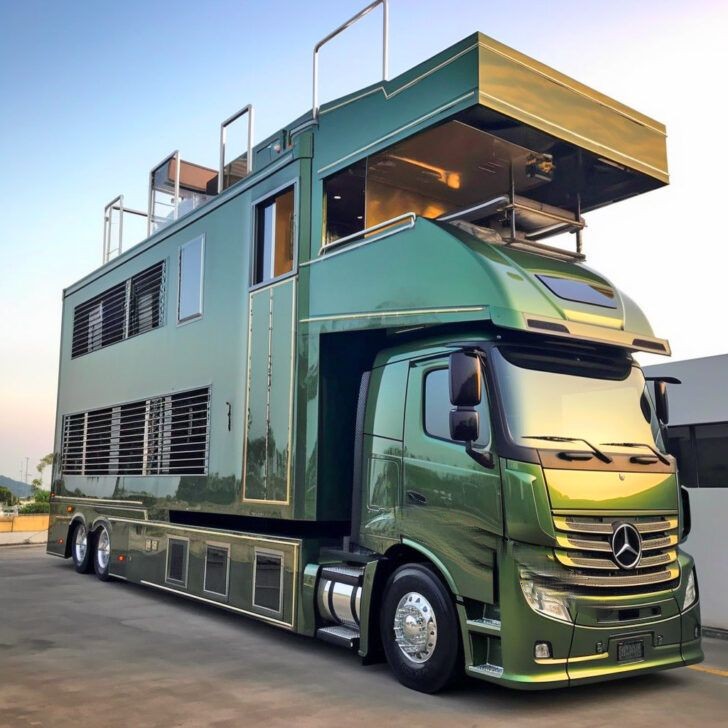Car Companies And Their Luxury Brands: A Comprehensive Guide
Car Companies And Their Luxury Brands: A Comprehensive Guide cars.truckstrend.com
The automotive landscape is a fascinating tapestry woven with threads of engineering prowess, design artistry, and shrewd business strategy. At its heart lies a dynamic relationship between parent car companies and their luxury brands – a synergy that defines market segments, drives innovation, and caters to diverse consumer aspirations. This intricate dance of ownership and branding is not merely about prestige; it’s a strategic imperative that underpins profitability, market diversification, and the very identity of some of the world’s most iconic vehicles.
This guide delves deep into the world of car companies and their luxury brands, exploring the strategic reasons behind these pairings, examining the key players, understanding how luxury brands maintain their allure, and offering practical advice for consumers navigating this high-stakes segment.
Car Companies And Their Luxury Brands: A Comprehensive Guide
The Strategic Imperative: Why Parent Companies Own Luxury Brands
At first glance, it might seem counterintuitive for a mainstream automaker to invest heavily in a separate, often low-volume, luxury marque. However, the reasons are multifaceted and deeply strategic:
- Market Diversification and Segmentation: Owning a luxury brand allows a parent company to target different demographics and price points. While a Volkswagen might appeal to the mass market, a Bentley or Lamborghini caters to an exclusive clientele seeking ultimate performance or unparalleled luxury. This broadens the company’s overall market reach and reduces reliance on a single segment.
- Brand Hierarchy and Prestige: Luxury brands elevate the entire group’s image. The halo effect of owning a Rolls-Royce or a Porsche can subtly enhance the perceived quality and engineering prowess of the parent company’s mainstream offerings. It signals a commitment to excellence across the board.
- Technological Synergy and Cost Efficiency: One of the most significant advantages is the ability to share platforms, engines, research & development, and manufacturing expertise across brands. For instance, many Audi, Porsche, and even Bentley models within the Volkswagen Group share fundamental architectures or powertrain components. This significantly reduces R&D costs and accelerates development cycles, even for bespoke luxury vehicles.
- Higher Profit Margins: Luxury vehicles, despite their lower sales volumes, typically command significantly higher profit margins per unit. This makes them crucial contributors to a company’s overall financial health, offsetting lower margins on mass-market vehicles.
- Legacy and Heritage Acquisition: Acquiring established luxury brands often means inheriting decades, even centuries, of automotive heritage and brand storytelling. This intangible asset is invaluable, lending instant credibility and allure that is difficult to build from scratch.

Giants of the Automotive World: Key Players and Their Luxury Portfolios
The automotive industry is dominated by a few major groups, each with a carefully curated portfolio of brands designed to capture various market segments.

Volkswagen Group (Germany): Perhaps the most diverse portfolio, Volkswagen AG owns a staggering array of brands. Beyond its namesake, it controls luxury marques like Audi (premium luxury, technology-focused), Porsche (high-performance sports cars and SUVs), Lamborghini (exotic supercars), Bentley (ultra-luxury sedans and SUVs), and Bugatti (hypercars, epitomizing ultimate exclusivity and performance). It also owns Ducati motorcycles. This group masterfully leverages platform sharing and component commonality while maintaining distinct brand identities.
-
BMW Group (Germany): Known for "The Ultimate Driving Machine," BMW itself is a premium luxury brand. Its portfolio extends to Mini (a premium compact brand with a distinct retro-modern appeal) and the pinnacle of ultra-luxury, Rolls-Royce (bespoke, handcrafted automobiles synonymous with opulence). BMW’s strategy focuses on distinct market positioning while sharing core technologies and engineering principles.
-
Mercedes-Benz Group AG (Germany): The inventor of the automobile, Mercedes-Benz is a powerhouse in luxury. Beyond its core brand, it has successfully established sub-brands like Mercedes-AMG (high-performance versions of Mercedes models, offering enhanced power and driving dynamics) and Mercedes-Maybach (ultra-luxury variants of top-tier Mercedes models, emphasizing supreme comfort, materials, and exclusivity). This tiered approach allows Mercedes to cater to different facets of the luxury market.
-
Stellantis (Netherlands/France/Italy/USA): Formed from the merger of Fiat Chrysler Automobiles and PSA Group, Stellantis boasts a broad range. Its key luxury and premium brands include Maserati (Italian performance and luxury), Alfa Romeo (Italian sports and luxury, focused on driving passion), and historically, Chrysler (though its luxury positioning has fluctuated, it remains a premium American brand). The group is working to redefine the positioning of some of these brands.
-
General Motors (USA): GM’s primary luxury offering is Cadillac, an iconic American luxury brand with a long history. Cadillac is actively reinventing itself with a focus on cutting-edge technology, bold design, and a strong push into electric vehicles, aiming to reclaim its position as a global luxury leader.
-
Ford Motor Company (USA): Ford’s luxury division is Lincoln, which competes in the premium American luxury segment. Lincoln emphasizes quiet luxury, comfortable rides, and sophisticated design, appealing to buyers who prioritize serenity and understated elegance.
-
Toyota Motor Corporation (Japan): Toyota created Lexus in 1989 specifically to compete in the luxury market, particularly in North America. Lexus quickly gained a reputation for unparalleled reliability, refined quality, and exceptional customer service, becoming a formidable force in luxury.
-
Honda Motor Company (Japan): Similar to Toyota, Honda launched Acura as its luxury division primarily for the North American market. Acura focuses on performance-oriented luxury, blending Honda’s engineering prowess with more upscale features and design.
-
Hyundai Motor Group (South Korea): A newer entrant but rapidly gaining traction, Hyundai spun off Genesis as its standalone luxury brand in 2015. Genesis has quickly impressed critics and consumers with its distinctive design, advanced technology, and competitive pricing, offering a compelling alternative to established luxury players.
-
Tata Motors (India): Tata Motors acquired the iconic British luxury brands Jaguar (performance luxury sedans and sports cars) and Land Rover (premium SUVs known for luxury and off-road capability) from Ford in 2008. These brands maintain their distinct British heritage and design language under Tata’s ownership.

How Luxury Brands Maintain Exclusivity and Appeal
Owning a luxury brand is one thing; making it desirable is another. These brands employ specific strategies to maintain their allure:
- Distinct Design Language: Luxury cars are instantly recognizable. They boast unique aesthetic philosophies, from Bentley’s stately elegance to Lamborghini’s aggressive angles, ensuring they stand out from the crowd.
- Superior Performance and Engineering: Beyond basic transportation, luxury cars offer highly refined powertrains, advanced suspension systems, and cutting-edge technology that translates into a superior driving experience, whether it’s blistering speed or serene comfort.
- Exquisite Materials and Craftsmanship: Interiors are a sanctuary of premium materials – supple leather, genuine wood veneers, polished metals, and carbon fiber. Meticulous attention to detail and hand-finishing often elevate these cabins far beyond mass-market standards.
- Personalized Customer Experience: Luxury ownership extends beyond the vehicle itself. It includes bespoke customization options, dedicated sales and service representatives, exclusive events, and often, white-glove treatment throughout the ownership journey.
- Brand Storytelling and Heritage: Leveraging a rich history, racing pedigree, or a narrative of innovation and exclusivity is crucial. Brands like Ferrari, Porsche, and Rolls-Royce continually reinforce their legacy to evoke emotion and desire.
Challenges and Considerations for Luxury Brands
While lucrative, managing luxury brands presents unique challenges:
- Maintaining Brand Identity and Avoiding Dilution: The biggest tightrope walk is sharing components and platforms without diluting the luxury brand’s unique identity. Consumers pay a premium for exclusivity, not for a rebadged mainstream car.
- Market Volatility and Economic Downturns: The luxury market is highly sensitive to economic shifts. In recessions, discretionary spending on high-end vehicles often declines sharply.
- Electrification Transition: The shift to electric vehicles (EVs) poses a significant challenge. Luxury brands must adapt their performance, design, and sound profiles to an electric future while retaining their core appeal and justifying their premium price point without the traditional engine theatrics.
- Intense Competition: The luxury segment is fiercely competitive, with new entrants (like Genesis) and established players constantly innovating to capture market share.
- Balancing Synergy with Exclusivity: Finding the sweet spot between leveraging group resources for efficiency and ensuring enough differentiation to justify the luxury price tag is an ongoing strategic challenge.
Practical Advice for Consumers: Navigating the Luxury Landscape
For those considering a luxury vehicle, here’s some practical advice:
- Understand Brand Positioning: Research what each luxury brand truly excels at. Do you prioritize performance (Porsche, AMG), comfort (Maybach, Lincoln), technology (Audi, Lexus), or raw emotion (Maserati, Alfa Romeo)?
- Consider the Total Cost of Ownership: Beyond the sticker price, factor in higher insurance premiums, specialized maintenance costs, and potentially more expensive parts.
- Test Drive Extensively: Luxury vehicles offer unique driving dynamics and sensory experiences. Spend ample time test-driving different models and brands to find the one that resonates with you.
- Research Resale Value: While luxury cars often depreciate faster than some mainstream vehicles, certain brands and models hold their value better than others.
- Evaluate Service and Warranty Offerings: Luxury brands often provide extended warranties, complimentary maintenance, and concierge services. Understand what’s included.
- Future-Proofing: With the rapid shift to EVs, consider how a vehicle’s powertrain might impact its long-term relevance and desirability.
Major Automotive Groups and Their Luxury Brands Overview
| Parent Company | Key Luxury Brand(s) | Typical Market Segment | Representative Price Range (Starting MSRP) | Noteworthy Characteristics |
|---|---|---|---|---|
| Volkswagen Group | Audi, Porsche, Lamborghini, Bentley, Bugatti | Premium, Performance, Ultra-Luxury, Hypercar | $50,000 – $3,000,000+ | Extensive platform sharing, diverse portfolio from premium to ultimate exclusivity. |
| BMW Group | BMW, Mini, Rolls-Royce | Premium, Ultra-Luxury | $40,000 – $500,000+ | Focus on driving dynamics, distinct market positioning across brands. |
| Mercedes-Benz Group AG | Mercedes-Benz, Mercedes-AMG, Mercedes-Maybach | Premium, Performance, Ultra-Luxury | $40,000 – $200,000+ | Tiered luxury strategy, innovation in technology and comfort. |
| Stellantis | Maserati, Alfa Romeo, (Chrysler) | Performance Luxury, Premium | $50,000 – $150,000+ | Italian flair and performance, re-establishing brand identities. |
| General Motors | Cadillac | American Luxury | $45,000 – $100,000+ | Bold American design, strong push into EVs and advanced tech. |
| Ford Motor Company | Lincoln | American Luxury | $40,000 – $90,000+ | Focus on quiet luxury, comfort, and serene interiors. |
| Toyota Motor Corporation | Lexus | Premium Luxury | $40,000 – $100,000+ | Renowned for reliability, refined quality, and exceptional customer service. |
| Honda Motor Company | Acura | Premium Luxury, Performance-Oriented | $35,000 – $70,000+ | Blends Honda’s engineering with upscale features and sporty driving. |
| Hyundai Motor Group | Genesis | Premium Luxury | $40,000 – $80,000+ | Rapidly growing, distinctive design, strong value proposition. |
| Tata Motors | Jaguar, Land Rover | Performance Luxury, Premium SUV | $50,000 – $150,000+ | Iconic British heritage, focus on luxury, design, and capability (Land Rover). |
Note: Price ranges are highly approximate starting MSRPs for general reference and can vary significantly based on model, trim, options, and market.
Frequently Asked Questions (FAQ) about Car Companies and Their Luxury Brands
Q1: Why do car companies own multiple brands, especially luxury ones?
A1: They own multiple brands for market diversification, reaching different customer segments, leveraging shared technology and platforms for cost efficiency, achieving higher profit margins from luxury sales, and enhancing the overall prestige and image of the parent company.
Q2: Do luxury brands share parts with their mainstream counterparts from the same parent company?
A2: Yes, they often share fundamental components like vehicle platforms, engine blocks, transmission designs, and certain electronic architectures. However, luxury brands heavily customize these shared parts with unique tuning, premium materials, and bespoke finishes to maintain their distinct identity, performance, and feel.
Q3: Are luxury cars always more reliable than mainstream cars?
A3: Not necessarily. While luxury brands often boast advanced engineering and higher quality materials, their complexity can sometimes lead to more intricate and expensive issues. Brands like Lexus are an exception, consistently ranking high in reliability due to Toyota’s engineering philosophy. Reliability varies significantly by brand and model.
Q4: What’s the difference between a luxury brand and a premium sub-brand (e.g., Mercedes vs. Mercedes-Maybach)?
A4: A luxury brand (like Mercedes-Benz) is a distinct marque. A premium sub-brand (like Mercedes-Maybach or Mercedes-AMG) is an ultra-exclusive or performance-oriented tier within an existing luxury brand. Maybach offers enhanced luxury and bespoke options beyond standard Mercedes models, while AMG focuses on extreme performance versions of Mercedes vehicles.
Q5: Is buying a luxury car a good investment?
A5: Generally, no. Like most new cars, luxury vehicles depreciate significantly, especially in the first few years. While some rare or classic models can appreciate, the vast majority are not investments. They are purchases for enjoyment, status, and a superior driving/ownership experience.
Conclusion
The relationship between car companies and their luxury brands is a cornerstone of the modern automotive industry. It’s a strategic masterclass in market segmentation, technological synergy, and brand management. From the vast portfolio of the Volkswagen Group to the focused elegance of the BMW Group, these parent companies leverage their luxury marques to capture discerning buyers, push the boundaries of automotive innovation, and ensure robust profitability. For consumers, understanding this intricate web allows for more informed decisions, appreciating not just the badge on the hood, but the complex corporate ecosystem that brings these automotive masterpieces to life. As the industry evolves, particularly with the advent of electrification, the dynamics between these brands will continue to shift, promising an even more fascinating future for luxury mobility.






